Energy & Commodities
As the world economy teeters on the brink and rising oil prices threaten to de-rail the delicate roots of recovery we asked legendary investor Dr. Marc Faber to join us and give his views on high gasoline prices, the shale boom, alternative energy, developments in the Middle East and much more.


“Pundits keep hinting at a vast Chinese conspiracy to ‘control’ rare earths, but it is a natural consequence of market forces. So long as the lowest-cost REE products are obtained in China, the total supply chain and the focus of the industry will remain in China.”
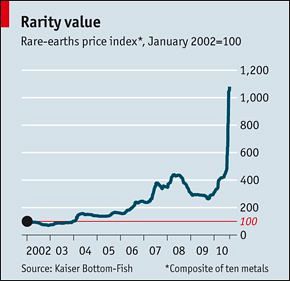
Rare earth deposits are not rare; they are just rarely put into production. Why is that? It is because of pricing economics driven by supply and demand. The demand for the rare earths as raw materials is today in southeast Asia, so it should not be surprising to see how the producing supply base has migrated to that part of the world. Yet pundits and politically charged writers keep hinting at a vast intentional Chinese conspiracy to “control” the rare earths. It is more than likely actually a consequence of the operations of the market forces of what we now (ironically) call free-market capitalism, as practiced today by governments following the model originated by John Maynard Keynes.
The American financial regulators are as guilty of allowing foreseeable but unintended consequences of their actions, as the Chinese regulators are responsible for maximizing the benefits of American oversight for China’s economy. There is actually no intractable problem so long as both economies practice free trade, but when Chinese self-interest is seen as a threat to American self-interest, it is the “other” rather than the “system” that is brought into ill-repute.
Rare-earth-based production (the supply) and production levels are determined by the economics of overall demand. So long as the lowest cost for rare earth products is obtained by buying such types of goods manufactured in China, the total supply chain and the focus of the rare earth industry will remain in China.
Today, in early March 2012, I am going to give one prescription for the rebirth, health and continued growth of a non-Chinese rare earth industry, and I’m also going to make one prediction about the growth of the global rare earth industry over the next ten years.
First, before I assume the mantle of the business survival specialist or of a resource-markets Nostradamus, I need to point out that the growth of demand for a rare earth element (REE) is in the case of almost all of the REEs, within a unique market for each of them individually. The demand for cerium (Ce), for example, has almost nothing whatsoever to do with the demand for lanthanum (La), or any other REE. They are not interchangeable, nor substitutable for each other, except in very few cases such as that of neodymium (Nd) and praseodymium (Pr), which in some limited applications in rare-earth permanent magnets (REPMs), are substitutable/interchangeable.
Notably the demand for Nd for use in REPMs is the principal driver of the demand for dysprosium (Dy), whereas the inverse is not true. This complex subject, the demand for individual and certain combinations of the REEs, is glossed over by pundits as if it doesn’t matter. This is a fatal flaw in creating investment strategies for developing REE supply, because what is overlooked is that the supply of the rare earths must be examined on an element-by-element basis and not looked upon simply as a “basket” containing all of the REEs.
This error of assuming that all or most of the REEs are interchangeable for marketing purposes, gives rise to the glib assumption that the same strategies will work for selling REEs to a variety of end users, whose only common interest is that their products all contain REEs.
An even more flawed assumption is the idea that the individual REEs are of equal importance to our technological economy in any of their uses, and so one simply calculates a basket price and this metric then defines an opportunity to produce a combined value. Nothing could be farther from the truth.
China appears to have unused (excess) capacity in the production of the lower-atomic-numbered rare earths (LANREs) in the amount of more than 50%. This means that China could ramp up production to twice today’s output of LANREs and, based on even old (from 1997) basically anecdotal data from the U.S. Geological Survey, keep this level of production up indefinitely.
On March 5 there was official news from China (reported in the China Daily, the English-language version of the People’s Daily, the house organ of the Chinese Communist Party) for example, that Jiangxi Copper, which has been given responsibility to consolidate rare-earth production in Sichuan province, says that it will increase production there to 50,000 tons per annum (tpa) and will target the export markets. Rare-earth prognosticators please pay attention. Jiangxi Copper is a world-class commodity-metals-producing giant. It is also state-owned and has more working capital and borrowing firepower than all of the non-Chinese rare earth ventures on Earth combined.
The domestic growth of the Chinese demand for the REEs is today without doubt the principal driver for any attempts to increase the supply of REEs. China’s domestic demand for all of the REEs today is probably at 70-80% of the world’s total supply (also, of course, today produced in China domestically).
China is openly moving to change its economy from an export-led to a domestic consumption-led model. As China does this, the domestic demand for REE-containing consumer products (the vast majority) will increase in China, apparently without decreasing outside of China. Unless there is increased production of those among the REEs that are the critical REEs, there will be shortages and price hikes—but not in China, which will simply consume more REEs domestically while reducing exports, as it has already begun to do precisely to prepare for the change of direction in its economy.
Reacting to that change and to world opinion, China has restructured its REE industry and this has resulted, for example, in Jiangxi Copper telling the world that it will ramp up production in the area under its control, so that both the Chinese domestic market and the export market can be served.
Jiangxi is a new competitor in the global REE market, and it is a large profitable company run by excellent managers. It has no competition outside of China in the REE space that can match it in resources of intellectual property, manpower resources, capital, and knowledge of world markets.
Yet in China, Jiangxi faces Baosteel and Chinalco in the newly consolidated REE production space as its competitors. Keep in mind that it will be an uphill battle to beat China at its own game inside China. So what is left for the non-Chinese REE supply wannabes is to produce something that the Chinese domestic REE market needs, and which is not produced in China in sufficient quantity, so that it will be in demand whether or not a total supply chain is ever constructed outside of China.
It seems that the higher atomic-numbered rare earths (HANREs), the so-called ‘heavy rare earths,’ fit this description and their number may even be joined by the LANRE Nd. There are two cultures on Bay Street (the center of junior-mining finance in Toronto, and most likely the financial world). Among the denizens of one of those two cultures, it is the share price of a company that measures its success; in the other culture, the question asked is: “How much money will it take to bring this venture into (profitable) production?” The probability of achieving profitable production is this second group’s measurement of success.
It is late in the rare-earth “boom” and so lately the line between the two cultures has begun to blur in the rare-earth “space.”
Junior mining is basically the mineral data mining of the earth. The data are discovered and recorded by field geologists and then it is filtered through layers of physical and chemical analysis, until for a given volume of the earth’s crust, a picture can be drawn in three dimensions, of the distribution of specific minerals within the chosen volume. If there are known mechanical and chemical procedures for recovering any valuable metals or minerals in the defined volume, and the result of those procedures is a product, or products that can be sold for more than the cost of production in volumes above the breakeven cost of the venture then, if those factors have additionally a high probability of continuing in time, we have a mineable ore body that is economic.
The day of reckoning is upon the rare earth juniors. Those of them who have no knowledge of supply-and-demand-based pricing, or the geographic distribution of demand, or who have no knowledge of finance will be gone first. Even among those that survive this first cut, if they believe that the goal of a business is anything other than producing consistently a competitive profit from selling products produced at the lowest cost with the lowest possible breakeven threshold, then they will be gone next.
The survivors will be those ventures that can sell their products at a profit, at a place in the supply chain which their management and marketing skills can maintain.
The Vatican in Rome regularly issues statements of Catholic doctrine, which are intended to be the “correct” interpretations of questions of faith for believers. These statements are written in church Latin and the translation of the category aspect of the title of all such statements is a papal “bull.” This is the short form of the Latin word bulla, used to describe the clay stamp traditionally applied to such edicts, and from which in English, we get the word “bulletin.”
I consider this article to be a “bulletin” to investors in the rare earth space.
I am not, nor do I pretend to be infallible, but I recognize that much of what passes for interpretation in the mainstream media of the announcements that regularly flow from junior miners, or in some cases from companies actually running mining operations, is just plain “bull.”
If a junior miner is to survive, it must either sell its ore body or develop a profitable mining operation. There has been little interest by the major mining companies in purchasing the properties of the current rare-earth juniors. Therefore to survive, the juniors will have to try to put their ore bodies into production as mines. This means that the clock is ticking. There will be no more than a dozen rare-earth ventures outside of China in actual development by the end of 2014. The global REE demand outside of China needs very little additional supply of the LANREs if it does not ramp up its metal-, alloy- and component-manufacturing supply chain. Certainly there is way too much potential and/or planned production of the LANREs chasing too small a market.
It is just the opposite for the HANREs. China is short of these very critical materials, so that even if no supply chain at all is constructed or enhanced outside of China for using such raw materials, there will be a demand for them.
The problem with the HANREs market is that it is not understood as a free-standing market by non-Chinese investors. Additionally it has turned out that the highest grades of HANREs as a proportion of total REEs, are in hard-rock ores and tin and uranium residues, the “metallurgy” (cracking) of which has not been successfully (i.e., economically) achieved to date. I believe, however, that the metallurgies of the hardrock ores have been addressed with sufficient success outside of China, by companies attempting this endeavor, to allow me to recommend to my institutional investment clients that they fund the development of the best-managed and best-sited ones.
The skills to extract the HANREs into a pregnant leach solution, and to separate the individual HANREs from that solution are in very short supply. No one, as of yet, outside of China, has addressed the commercial separation of the HANREs. Innovation Metals, a company cofounded by my TMR colleague Gareth (and to which I am an advisor), is attempting to do something about this, with its goal of creating the world’s first independent rare-earth separation facilities, to toll-treat rare earth concentrates. Do not be fooled by those who say that all you have to do is “buy” a property and “feed” the ore into an existing LANRE separation system. This is flim-flam.
I predict that at least one, perhaps two, American companies, and one European company, will be producing HANREs competitively with the Chinese within three to five years from hardrock mining. I further predict that it is these operations that will catalyze the rebirth of a non-Chinese total supply chain for the production of Dy-modified REPMs. There are a number of promising Canadian, South African, and Australian HANRE-themed junior miners, who I believe will become suppliers to the total supply chains located in the USA, Europe, Japan or even China. Their ability to do so will be based on competitive pricing.
I am not mentioning Great Western Minerals Group’s South African/UK integrated operations, because they are now in a group of one, at least with regard to the commercial production and utilization in the downstream total supply chain of the heavy rare earth Dy. As far as I know their output of Dy is fully taken up by their customers and is only a market factor in the reduction of non-Chinese demand for Dy it will cause (less than 3% of the current market).
The first step in the production of a REE is the mining of an ore containing a mineral that has REEs in its molecular or physical composition. In simple English, a rare earth mineral is one in which the REEs are either chemically bound into, or in a few cases, just physically attached (adsorbed) onto a substrate mineral. The ore at Molycorp’s Mountain Pass mine is an example of the first and the famous adsorption clays in China’s southern provinces are an example of the second.
A common pundit error at this point is to declare that the ores with the highest concentrations of the rare earths are the most valuable. The most valuable rare earth ores are those from which the rare earths can be extracted efficiently at the lowest cost per unit. In fact, the most pressing problem today in the rare-earth supply space is the fact that all of the HANREs now produced commercially, are from the very low overall grade ionic adsorption clays in China. This is because of:
- The fact that by ignoring (and not capitalizing) safety or environmental costs, the Chinese mining industry has been able to continue due to the high demand for their “unique” products, and
- The lucky situation that the ionic clays are essentially thorium and uranium free, allowing their processing by crude heap leaching in the open.
For hard rock, HANRE-enriched deposits have been found outside of China, the concentration of desired minerals is accomplished by preparing the ore (typically this involves crushing and/or grinding followed by gravity separation). Milling is the first step, with the second typically done by floatation, in which the higher specific gravity minerals are separated from the lighter “rock” by a combination of surface chemistry techniques and the differences in their densities.
When we have the ore concentrated, we come to a point in the process where mining terminology diverges from both common English and from the strict definitions of terms as they are used in modern materials science. When miners use the term “metallurgy,” they usually mean only the extraction from an ore concentrate of the chemical forms of the elements desired.
In such cases, developing the metallurgy means chemically leaching the ore or ore concentrate. Leaching is a wet chemical process most often involving acids or bases), which places into solution the chemical elements present in the ore, so that they can be further chemically processed to separate them from each other.
Typically even the separated elemental chemicals must be further purified—especially in the frequent case where separation is not analytical (i.e., is not complete). The purified chemicals are then reduced by chemical/physical processes to create pure metals.
An example of straightforward mining metallurgy is the processing of common sulfide ores of copper (Cu). Their metallurgy starts with roasting (i.e., forced-air, high-temperature oxidation). The Cu oxide so obtained is dissolved in sulfuric acid, obtained in part by capturing the sulphur dioxide from the roasting, catalytically oxidizing it further to sulphur trioxide and dissolving this in water.
The Cu sulphate solution is electrolyzed so that the pure Cu collects on the cathode and the nuisance metals, such as molybdenum, gold, silver, palladium, tellurium, selenium and arsenic collect in the “mud” formed under the anode. Some of the nuisance metals contained in the Cu ore are also collected in part from the exhaust gases of the roaster, which include volatile oxide species of many of the elements also present in the mud.
The mining metallurgy of Cu ores is complex, and time- and energy- (and thus capital-) intensive, but it pales in comparison with the complexity of the separation of the individual rare earths after they have been extracted from their ores into a pregnant leach solution.
The separation of the mixed rare earths produced by the leaching of their ore concentrates into individual REEs is a labor-intensive, time-consuming operation, accomplished commercially today only via the process known as solvent extraction (SX), which is expensive to facilitate, difficult to supply with some Chinese-produced chemical reagents, slow and in need of a large body of skilled chemical engineers for its operations and quality control. Outside of China, and previously in Japan and possibly Kyrgyzstan, no one has yet constructed a SX operation with the capability to separate the HANREs.
I have been told that a HANRE-separation-capable facility is, in fact, being constructed in the Western Cape province of South Africa, by Great Western Minerals Group, but I do not know the timetable for that project. I do know that the punditry has now figured out that the HANREs are the most desirable of the REEs. But once again the highest grade, largest total ore tonnages are being mindlessly touted as “the best investments.”
Of course, the best investments are the well-managed ventures that own ore bodies for which known extraction techniques work, and from which a pregnant leach solution can be made, which will be capable of being fed into a separation plant, that will produce separated, purified rare earth chemicals. All of this will have to be done at the lowest costs possible and the lowest breakeven possible.
HANREs so produced, mainly Dy and terbium (Tb), will be saleable into a market in deficit for the rest of this decade and beyond.
A total supply chain to produce Dy-modified Nd-based magnets will be built in Europe. I believe that such a project is also underway in the U.S. The successful mining ventures in the HANRE space will most likely sell their products in a magnet “bundle.” In order to get Dy, the customer will also need to buy Nd in a ratio of the two that insures the total sale of both.
There are already too many contenders in the LANRE space outside of China. The survivors will be the low cost, lowest breakeven, producers.
Anyone who is going to invest in a junior rare-earth-mining venture must look at its balance sheet, for its breakeven point at reasonable prices. One must also ask exactly what market share the company needs, to break even at those prices. Next one must ask for a list of the products to be produced, which are to be sold at that point into the supply chain, and match that list with the companies expertise, or access to expertise, necessary to technically accomplish each step in the supply chain in which it will be directly involved.
Size matters in a high-school locker room. Only skills and breakevens matter in the world of mining. . .
Jack Lifton, Resource Investor

Canadian farmland continues to receive favorable attention from alternative investors. We believe it stems from some unique and increasingly sought after characteristics – low volatility, low correlations to traditional asset classes, high correlation to inflation, superior risk adjusted returns, linkage to emerging market growth with limited political risk, reliable cash-flow generation, if structured correctly, minimal counter-party risk and, in Saskatchewan in particular, a margin of safety.



Food prices are skyrocketing all across the globe, and there’s no end in sight. The United Nations says food inflation is currently at 30% a year, and the fast-eroding value of the dollar is causing food prices to appear even higher (in contrast to a weakening currency). As the dollar drops in value due to runaway money printing at the Federal Reserve, the cost to import foods from other nations looks to double in just the next two years — and possibly every two years thereafter.
That’s probably why investors around the globe are flocking to farmland as the new growth industry. “Investors are pouring into farmland in the U.S. and parts of Europe, Latin America and Africa as global food prices soar,” reports Bloomberg magazine HERE. “A fund controlled by George Soros, the billionaire hedge-fund manager, owns 23.4 percent of South American farmland venture Adecoagro SA.”
Jim Rogers is also quoted in the same story, saying, “I have frequently told people that one of the best investments in the world will be farmland.”
That’s because demand for food is accelerating even as radical climate changes, a loss of fossil water supplies, and the failure of genetically engineered crops is actually reducing food yields around the globe. Ceres Partners, which invests in farmland, has produced astonishing 16 percent annual returns since its launch in 2008. And this is during a depressed economy when most other industries are showing losses.
….read (scroll down) “Why growing and storing your own food can be a goldmine” & “Lessons from post World War II Taiwan and why food is more valuable than gold” HERE

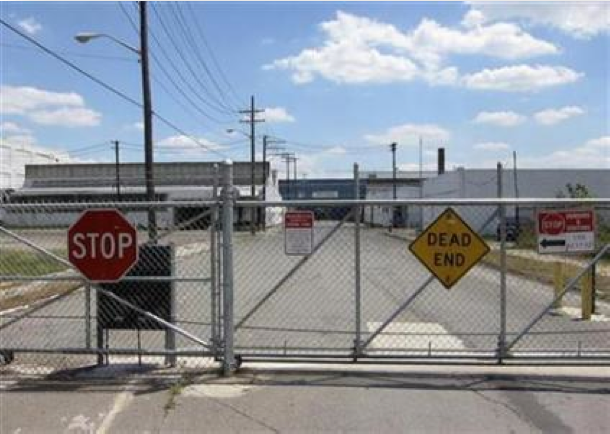
Photo of Goldman Sachs’ Detroit Commodity Warehouse:
Most people do not realize but there is a Commodity Empire that is run by New York’s biggest
banks/Investment Banks that are in a continued struggle with the Federal Reserve over the right to
retain the power of their commodity trading empires. They control the storage warehouses, storage
tanks, and silos constituting hard assets worth multi-billions of dollars. But it also gives them inside
information regarding inventories and the ability to manipulate the prices by moving inventory back and
forth to unreported warehouses or to London.
At the center of this power struggle has been the issue of their proprietary trading under the new
derivatives regulations. Ever since the 2008 financial crisis, the fight by Goldman Sachs, JPMorgan Chase,
and Morgan Stanley to retain or expand their valued physical commodity operations has been roaring
silently behind the headlines of mainstream media.
This is coming to a head and the Fed will most likely yield allowing banks more freedom to invest in the
physical commodity world even far more than they did prior to 2008. True, the Fed could order them to
sell off the assets that they use to boost their inside trading ability. However, it is unlikely that the Fed
will really enforce the ban on such trading. Goldman has been arguing that they have a right to remain
in that business for it is what you call being ‘grandfathered’ in prior to 2008 and are thus part of their
“merchant banking” investments, promising to keep them segregated from the trading desks – fat
chance!
The whole problem with the New York Banks is that they are greedy. They are just not satisfied being
banks. They began merging with commodity firms in the 1980s. They began speculating and then to
reduce risk, they formed the “club” and began infiltrating government to change the direction of
regulation. When they lose, they are always bailed out and when they win, they keep the profits.
Regulators and lawmakers have allowed them to do as they like. As long as the government needs to
borrow money every year, they are scared to death to really regulate the banks at all beyond pomp and
show. In theory, the banks are under pressure to reduce risk on their balance sheet and that would
seem to suggest that they should get out of the commodity business. Morgan Stanley is the only one of
the three that has any foundation to be in the business. They are an Investment Bank with real live
brokerage operations. Goldman does brokerage for institutional clients, but that is primarily so they
have also access to inside information. They are not a national retain firm and in the crisis, they applied
to become a bank to be able to borrow from the Fed.
While the Fed’s does not want to appear to be accommodating, most politicians will not say anything
until the shit-hits-the-fan again. Hell, most are hoping Goldman will hire them. The notion that the
sentiment in Washington is somehow about reducing risk, let’s face the truth, most on Capitol Hill are
clueless about what is risk. So while the drama circulates around pretending the banks may lose their
commodity power, it is unlikely to ever happen. It is just more pomp and circumstance without substance.
Martin Armstrong is offering you an opportunity to buy ancient Roman Coins:

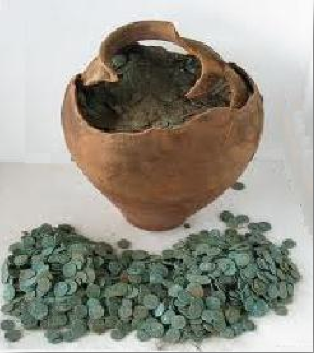
The response to the offering of Roman Coins was simply overwhelming. So many people have written asking how they can buy Roman Coins and others realizing these are from the 3rd Century have asked are there examples available documenting the collapse of the monetary system? I have contacted some old friends with respect to making available a selection of Roman coins of this 3rd Century period for those interested in owning a piece of real live history and/or demonstrating the Monetary Crisis that led to the fall of Rome from a hoard of Roman coins.

Because of the turmoil of the 3rd Century and precisely the dangers we face today as government goes after citizens hunting down their wealth to confiscate to sustain their existence, what happens is they cause capital to hoard reducing the VELOCITY of money. Hoards of Roman coins of earlier chaotic periods exist, although much fewer in number. Consequently, the earlier coins tend to be much rarer. As shown above, here are two gold coins from the Post-Caesarian Civil War period (44-42BC) that followed the assassination of Julius Caesar. In the case of Brutus, a non-portrait silver denarius would bring generally $2,000-$5,000 where a silver EID MAR (bragging he killed Caesar) would be $25,000-$100,000. There are only two gold EID MAR (Ides of March) coins and these today would bring more than $1 million. The gold Ahenobarbus (supporter of Brutus) would bring well over $50,000 today.
Hoards of the 3rd Century are far more common. Pots with up to 50,000 coins have been discovered, but of course the condition is often well corroded making such coins worth perhaps $10 simply because they are a relic of the past and a piece of history. Silver and gold coins endure through the ages much better than bronze. Thus, condition of coins during the 3rd century does help to reduce the supply of decent well preserved coins in proportion to the bulk that are found over time.
Consequently, those asking the question: Is it possible to obtain coins showing the drastic collapse in silver content of the 3rd Century? This collapse took place during the reign following Valerian I (253- 260AD) who was captured by the Parthians (Persians) and stuffed as a wild animal trophy upon his death. His son, Gallienus (253-268AD) made no effort to rescue his father and the economic collapse thereafter is easily seen in the coinage. So the answer is yes! I have made arrangements for those seeking such an example of the Monetary Crisis of the 3rd Century.
This is an accommodation – not a business
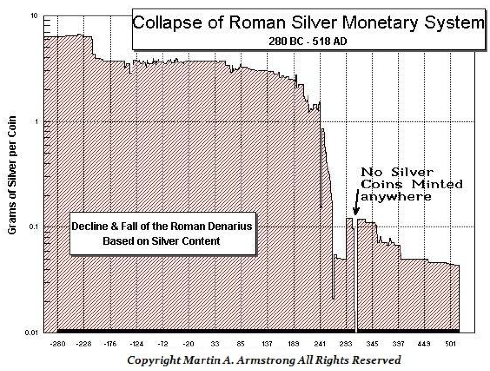
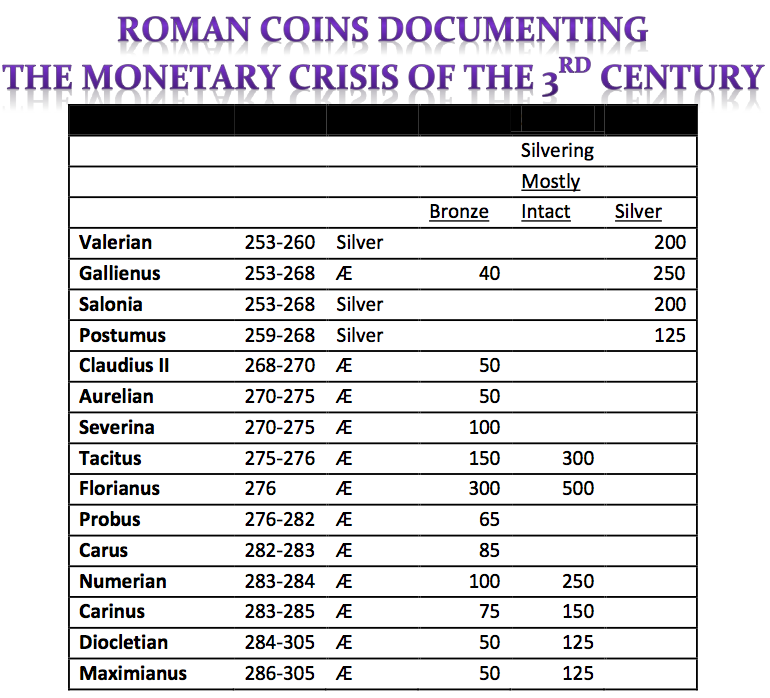
The quality of these coins is virtually Extremely Fine without corrosion. All names are legible. These are the selected quality from the hoard and and are not the typical low grade junk often sold. This provides a good sampling of this period (minus the extreme rarities) that have survived thanks to the tremendous economic upheavals of the times that led people to burry their wealth.
Set of 15 one average coin of the above non-corroded, Very Fine condition all readable $595 (suitable for non-collectors)
Set of 16 above with (2) Gallienus (Silver/Bronze) Extremely Fine Top Grade all readable $2450.00 (with silvering largely intact where noted)
Prices include shipping. Payment is acceptable at: ArmstrongEconomics@HotMail.COM
Or checks may be send to:
Armstrong Economics
Two Penn Center – 1500 JFK Blvd, Suite 200 – Philadelphia, Pa 19102












